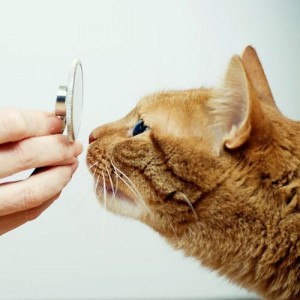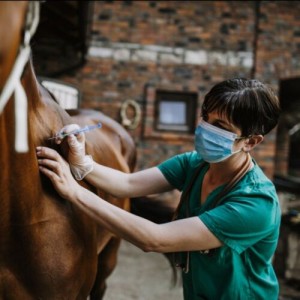World Zoonoses Day
by Jenny Alonge
World Zoonoses Day is observed annually on July 6th with the purpose of raising awareness, increasing understanding, and spreading knowledge about zoonotic diseases. Zoonoses are considered responsible for 2.5 billion human illnesses and 2.7 million human deaths worldwide every year. In addition, a Centers for Disease Control (CDC) study demonstrated that 60% of existing infectious diseases are zoonotic, and at least 70% of emerging infectious diseases originate in animals. Suitable information campaigns about zoonoses will hopefully help mitigate these effects.
Zoonoses history
On July 6, 1885, French biologist Louis Pasteur injected the first of 14 daily rabies vaccine doses to 9-year-old Joseph Meister, who had been bitten by a rabid dog two days previously. The vaccine was composed of rabbit spinal cord suspensions containing progressively inactivated rabies virus. The decision to inject the boy was not made easily. “The child’s death appeared inevitable. I decided not without acute and harrowing anxiety, as may be imagined, to apply the method which I had found consistently successful with dogs,” said Pasteur. The vaccination saved the boy, and the Pasteur rabies immunization procedure was rapidly adopted throughout the world. Other relevant historical zoonotic events include:
- 2300 BC — The first written record about dogs and humans dying from rabies is found in the Mosaic Esmuna Code of Babylon where Babylonians were fined if their dog transmitted rabies to another person.
- 431 to 404 BC — The “plague of Athens” killed about one-quarter (i.e., approximately 75,000 to 100,000) of Athens citizens during the Peloponnesian wars. Based on epidemiological features and disease signs, which included high fever, facial erythema, pustular rashes, conjunctivitis, respiratory problems, and gastrointestinal (GI) signs, the most probable cause was louse-borne typhus.
- 541 to 546 AD — The first plague pandemic started in Egypt and engulfed the whole known world, including Palestine, Syria, Constantinople, Europe, central Asia, and China. An estimated 100 million people died.
- 1647 to 1648 — Yellow fever was imported from West Africa during the slave trade, causing an extensive epidemic in the Caribbean.
- 1851 — The first international conference to discuss preventive measures against cholera, plague, and yellow fever was convened in Paris.
- 1897 — Dr. Bernhard Lauritz Frederik Bang, a Danish veterinarian, isolated Brucella abortus from aborted cattle.
- 1918 to 1920 — The Spanish flu pandemic caused at least 21 million human deaths, likely originating from an avian influenza virus.
- 1946 — The CDC was founded in Atlanta.
- 1976 to 1978 — Extensive Ebola hemorrhagic fever outbreaks occurred in Zaire and Sudan.
- 1999 to 2006 — The West Nile encephalitis epidemic in New York likely originated from Israel.
- 2009 — The H1N1 swine influenza pandemic encompassed 213 countries and caused 17,483 human deaths.
- 2020 — The World Health Organization (WHO) declared the novel coronavirus (COVID-19) a worldwide public health emergency.
Interesting zoonoses facts
Interesting facts about zoonotic diseases include:
- Bats carry the most unknown pathogens that can infect humans.
- More than 250 zoonotic diseases exist, but many more may not yet have been discovered.
- At 88.31%, rabies has the highest fatality rate of any zoonotic disease.
- Rabies is estimated to cause 59,000 human deaths annually in more than 150 countries, with 95% of these cases occurring in Africa and Asia.
- Leptospirosis is the most widespread and prevalent zoonotic disease.
- Brucellosis has been eradicated from domestic livestock in the United States, but the disease has been detected in U.S. companion animals (Brucella canis) and U.S. wildlife (B. suis and B. abortus), which threatens human and animal health.
- The zoonotic diseases that the CDC considers most concerning to the United States include zoonotic influenza, salmonellosis, West Nile virus, plague, emerging coronaviruses, rabies, brucellosis and Lyme disease.
- As of April 2023, Asian longhorn ticks have been found in Arkansas, Connecticut, Delaware, Georgia, Indiana, Kentucky, Maryland, Massachusetts, Missouri, New Jersey, New York, North Carolina, Ohio, Pennsylvania, Rhode Island, South Carolina, Tennessee, Virginia and West Virginia. In other countries, these ticks spread serious diseases to people and animals, and studies are ongoing to determine the danger in the United States.
- Animals reported infected by COVID-19 include cats, dogs, hamsters, ferrets, lions, tigers, snow leopards, otters, non-human primates, hyenas, hippopotamuses, manatees, minks, white tailed deer, mule deer, a black-tailed marmoset, and a giant anteater. Most were infected after close contact with COVID-19 infected people.
Reducing zoonotic diseases
To help reduce zoonotic disease spread, encourage your clients to follow these tips:
- Washing hands — Surprisingly, many people don’t wash their hands when necessary, or don’t wash long enough. You should wash your hands before eating, after handling animals or their environment, after contacting soil, and after using the bathroom. You should use soap and water and scrub for at least 20 seconds.
- Managing fecal matter — Several zoonotic organisms are transmitted through feces. Clean your cat’s litter box regularly and remove your dog’s feces from your yard to reduce infective pathogens in your environment.
- Maintaining routine veterinary care — Keep your pet up to date on their vaccinations, and ensure a veterinarian routinely assesses their overall health, including fecal tests and blood work.
- Avoiding wildlife — Wild animals can carry several zoonotic diseases, so avoid contact with these animals, and also ensure your pet steers clear.
- Providing year-round parasite prevention — Year-round parasite prevention protects your pet from intestinal parasites that can be transmitted to you and your family, as well as zoonotic diseases transmitted by fleas and ticks. These medications are also important to prevent heartworm disease.
- Covering the sandbox — When not in use, cover your sandbox to prevent stray cats from using it as a litter box. This helps protect your family from parasites and other dangerous organisms.
- Packing water — When outdoors, don’t allow your pet to drink from potentially contaminated water sources, such as natural sources or bowls left on the sidewalk. Pack a portable water bowl and water for your pet to drink.
- Avoiding raw or undercooked meat — Parasitic larvae and bacterial contaminates in meat are commonly zoonoses transmission methods, but ensuring meat is cooked to the appropriate temperature helps prevent these infections.
- Testing your bird for psittacosis — Pet birds can carry Chlamydophila psittaci, a bacterium shed in feces and ocular and nasal secretions, which can seriously infect humans.
Raising awareness about zoonoses will hopefully help prevent future disease spread.














List
Add
Please enter a comment